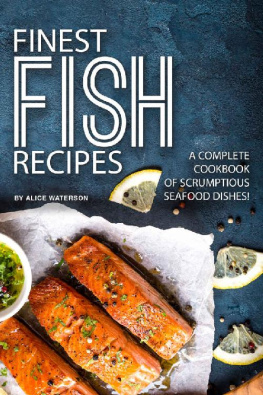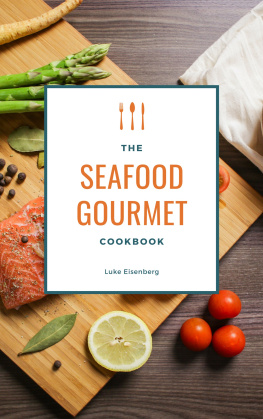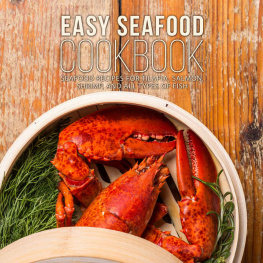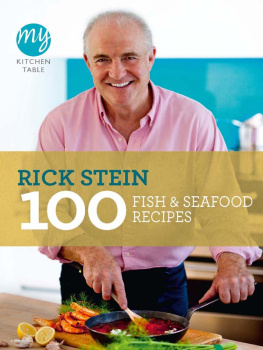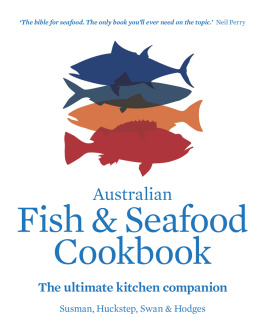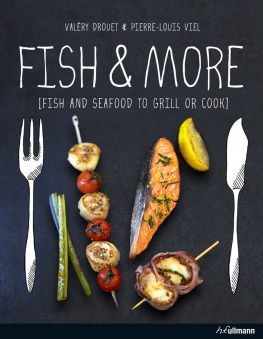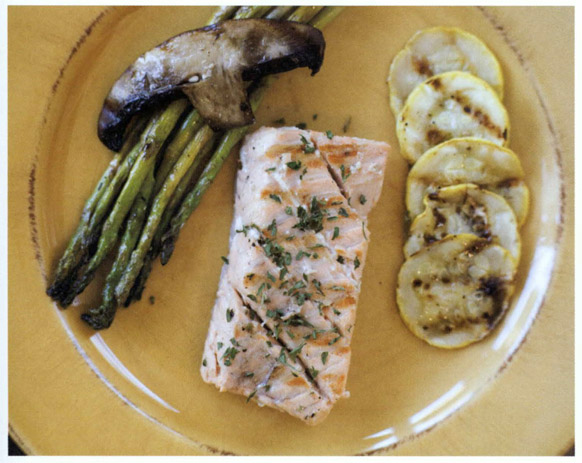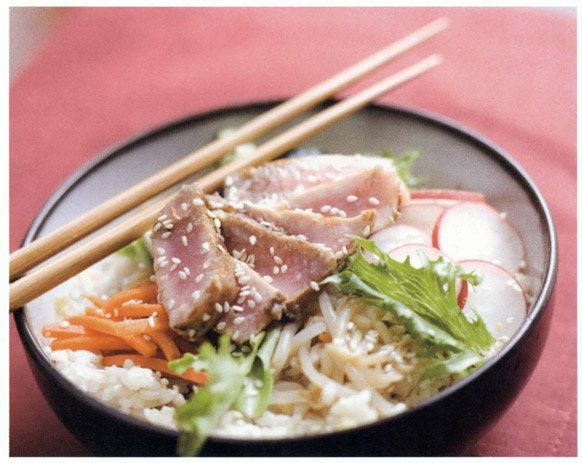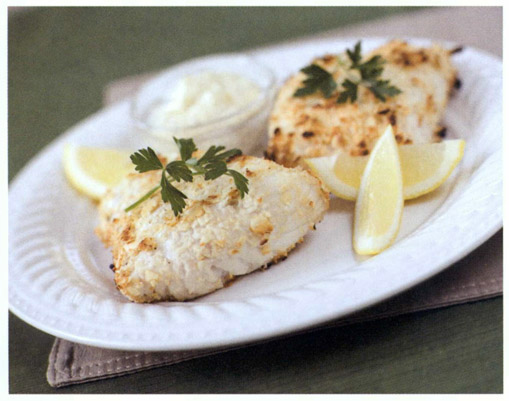GLOSSARY
Beat: To manipulate food with a spoon, mixer, or whisk to combine.
Bread: To coat fish with crumbs or crushed crackers before baking or frying.
Brine: A mixture of salt, sugar, and water used to season fish before cooking.
Broil: To cook food close to the heat source, quickly. Used in slow cooking to add color and flavor.
Broth: Liquid extracted from fish, used as the basis for most soups.
Brown: Cooking step that caramelizes food and adds color and flavor before cooking.
Coat: To cover food in another ingredient, as to coat fish fillets with bread crumbs.
Chill: To refrigerate a food or place it in an ice-water bath to rapidly cool it.
Chop: To cut food into small pieces, using a chefs knife or a food processor.
Chowder: A soup thick with vegetables and meats, usually seafood, thickened with cream and cheese.
Deglaze: To add a liquid to a pan used to saut meats; this removes drippings and brown bits to create a sauce.
Dice: To cut food into small, even portions, usually about inch square.
Grate: To use a grater or microplane to remove small pieces or shreds of skin or food.
Grill: To cook over coals or charcoal, or over high heat.
Herbs: The edible leaves of certain plants that add flavor to food, including basil, marjoram, thyme, oregano, and mint.
Marinate: To allow fish or vegetables to stand in a mixture of an acid and oil, to add flavor and tenderize.
Melt: To turn a solid into a liquid by the addition of heat.
Pan-fry: To cook quickly in a shallow pan, in a small amount of fat over relatively high heat.
Saut: To cook a food briefly in oil over medium-high heat, while stirring it so it cooks evenly.
Seasoning: To add herbs, spices, citrus juices and zest, and peppers to food to increase flavor.
Shred: To use a grater, mandoline, or food processor to create small strips of food.
Simmer: A state of liquid cooking, in which the liquid is just below a boil.
Spices: The edible dried fruits, bark, and seeds of plants, used to add flavor to food.
Steam: To cook food by immersing it in steam. Food is set over boiling liquid.
Toss: To combine food using two spoons or a spoon and a fork until mixed.
Whisk: Both a tool, which is made of loops of steel, and a method, which combines food until smooth.
FISH & SEAFOOD COOKBOOK
Copyright 2010 by Morris Book Publishing, LLC
ALL RIGHTS RESERVED. No part of this book may be reproduced or transmitted in any form by any means, electronic or mechanical, including photocopying and recording, or by any information storage and retrieval system, except as may be expressly permitted in writing from the publisher. Requests for permission should be addressed to Globe Pequot Press, Attn: Rights and Permissions Department, P.O. Box 480, Guilford, CT 06437.
Knack is a registered trademark of Morris Book Publishing, LLC, and is used with express permission.
Editorial Director: Cynthia Hughes
Editor: Katie Benoit
Project Editor: Tracee Williams
Cover Design: Paul Beatrice, Bret Kerr
Text Design: Paul Beatrice
Layout: Melissa Evarts
Cover Photos by: Christopher Shane
Interior Photos by: Christopher Shane with the exception of those on page 4 (left): wiedzma | Shutterstock; page 32 (left): Robert Pernell | Shutterstock; page 69 (right): Onestepbeyond | Dreamstime.com; and page 143 (left): erkanupan | Shutterstock.
Library of Congress Cataloging-in-Publication Data
DuCap, Doug.
Knack fish & seafood cookbook: delicious recipes for all seasons / Doug DuCap and Linda Beaulieu ; photographs by Christopher Shane.
p. cm.
Includes index.
ISBN 978-1-59921-916-5
1. Cookery (Fish) 2. Cookery (Seafood) I. Beaulieu, Linda. II. Shane, Christopher. III. Title.
TX747.D82 2010
641.692dc22
2010015370
The following manufacturers/names appearing in Knack Fish & Seafood Cookbook are trademarks:
Boboli; Clamato; Cointreau; DeLonghi Fritos; Goldfish; Grands!; Gran Marnier; Kitchen Bouquet; Mae Ploy; Old Bay; Pernod; Ritz; Rotel; Sanyo; Southern Comfort; Special K; Stove Top; Tabasco; Thermador; Viking; West Bend; Wolf
The information in this book is true and complete to the best of our knowledge. All recommendations are made without guarantee on the part of the authors or Globe Pequot Press. The authors and Globe Pequot Press disclaim any liability in connection with the use of this information.
Printed in China
10 9 8 7 6 5 4 3 2 1
Acknowledgments
Many thanks to my editor, Katie Benoit, for her guidance and her unwavering kindness.
Special thanks go out to the mighty Pat Conroy for his generous praise and encouragement; to my dear friends Joe and Terri (and the many wonderful folks at Terris Sports Bar) for their love and support; to Scott, George, and the rest of the D.F. Club (dont ask); and to the awesome Fred Dockery: friend, fisherman, and patient teacher.
My thanks to the fine and welcoming people of Charleston, South Carolina, and to the memory of the late Dr James Gulledge, whose abiding love for the Lowcountry led me to this beautiful place.
And especially: thanks to my oldest and bestest, Thos W, always, for everything.
~Doug DuCap
Publishers Acknowledgments
The publisher would like to thank the two talented authors who collaborated to create this delicious book and the photographer who brought the recipes to stunning color on the pages.
INTRODUCTION
Lets face it. Seafood can be intimidating.
Unlike a meat market, with its relatively few and familiar choices of beef, pork, and chicken, a well-stocked fish market might have a bewildering and overwhelming display of several dozen different species of fish, mollusks, crustaceans, and cephalopodsoften in their original state and all with different requirements.
Some might require scaling, gutting, and boning. Others might require seemingly arcane tools and special techniques to prepare. Some are far too expensive to risk mangling or overcooking them.


